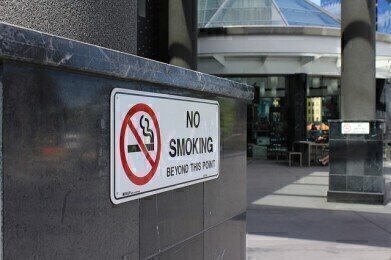Mass Spectrometry & Spectroscopy
What Impact Has the UK Smoking Ban Had?
Jul 17 2017
It’s hard to imagine that just 10 years ago, Britain’s public spaces were fair game for smokers. From pubs and nightclubs to train stations and plazas, very few places were exempt. Then, the government introduced a nationwide ban on smoking in public spaces, which was hailed as the important piece of public health legislation for a generation.
So, what’s changed since the milestone ban?
More Brits are kicking the habit
Most importantly, there’s been a spike in Brits giving up smoking. The ban positioned lighting up as a social taboo, which has pushed smoking rates down year-on-year.
Kids are less keen
Since 2007, the number of children who regularly smoke has halved to just 3%.
Fewer people are hospitalised
There’s also been a significant decline in hospital admissions due to smoking related issues like heart attacks, asthma and lung infections.
Glossy packs are gone
The success of the British ban also triggered other initiatives, like plain packaging and a ban on point of sale advertising. According to cognitive scientists, plain packaging could encourage more than 300,000 Brits to permanently quit smoking.
Awareness of passive smoking has increased
Prior to the ban, Brits were largely in the dark about the dangers of second hand smoke. Now, smoking indoors, around children and within the proximity of non-smokers is considered irresponsible and antisocial.
No smoking at train stations
Following the ban, the Association of Train Operator Companies and Network Rail made all its stations smoke free zones.
A drop in the number of teen smokers
Thanks to a ban on vending machines it’s much harder for teens to acquire cigarettes. The legal smoking age was increased from 16 to 18, with taxes also slapped on tobacco products. This makes cigarettes much less affordable for teens.
Smoke free cars
While people are still allowed to smoke in private vehicles, if kids are onboard there’s a total ban. This is because children have smaller lungs and breathe faster, which means they’re more likely to be affected by second hand smoke.
E-cigs are on the rise
Smoking may be on its way out, but e-cigarettes are on the rise. The global trend allows smokers to get their nicotine fix, without inhaling dangerous toxins. Of course, the concept is laced with controversy, with some critics adamant that e-cigs should also be a part of the ban.
From analysing the particulate matter of cigarette smoke to measuring exposure to nickel and other toxins, mass spectrometry plays an important role in researching the health effects of smoking. For a closer look at the latest developments, ‘65th ASMS Conference on Mass Spectrometry and Allied Topics’ covers one of the industry’s most important events.
Digital Edition
Lab Asia 31.2 April 2024
April 2024
In This Edition Chromatography Articles - Approaches to troubleshooting an SPE method for the analysis of oligonucleotides (pt i) - High-precision liquid flow processes demand full fluidic c...
View all digital editions
Events
Apr 28 2024 Montreal, Quebec, Canada
May 05 2024 Seville, Spain
InformEx Zone at CPhl North America
May 07 2024 Pennsylvania, PA, USA
May 14 2024 Oklahoma City, OK, USA
May 15 2024 Birmingham, UK


















